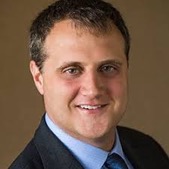12 Jun Michael Bright, president and CEO of SFIG, the U.S. securitization lobby, has pledged to provide meaningful education, advocacy, and connection for our members across all aspects of securitization. The best service our securitization lobby could provide is outreach to close the securitization market’s yawning knowledge and skills gap.
 Michael Bright, the incoming president and CEO of SFIG, the U.S. securitization lobby, has pledged “to provide meaningful education, advocacy, and connection for our members across all aspects of securitization.” The former EVP and COO of GNMA established his mortgage credentials working for former Senator Corker (TN-R) on his 2013 housing finance reform bill.
Michael Bright, the incoming president and CEO of SFIG, the U.S. securitization lobby, has pledged “to provide meaningful education, advocacy, and connection for our members across all aspects of securitization.” The former EVP and COO of GNMA established his mortgage credentials working for former Senator Corker (TN-R) on his 2013 housing finance reform bill.
Bob Corker has a special place in my heart, as one of four senators who showed up at the senate panel on the state of securitization in 2011. (That’s me, second from the right.) He was the only senator genuinely interested in how securitization works, and what really impressed me was that he was unafraid to show ignorance by asking substantive questions.
Fast forward to 2019. Securitization remains a bad word. The damage done in the GFC has over-ridden all positive associations of the market’s first two decades (like short-circuiting the impact of the S&L Crisis). Because it has a bad reputation, no public figure would even dare to explore securitization’s real-world potential for resolving the intractable financing challenges of the 21st Century, i.e., where finding willing counterparties and issuing balance sheet debt no longer works as a solution.
But besides the bad reputation, there is also a yawning knowledge and skills gap to address. Securitization is not just corporate finance repackaged. It is based on a different model and produces different metrics. You can’t develop securitization structuring skills in an MBA or MSc curriculum, where credit engineering is synonymous with stochastic calculus.
Merton’s default model doesn’t work well for corporate debt…it doesn’t work at all for securitization.
In theory, SFIG has a vital role in re-educating America about securitization’s positives, not just as the industry lobby but an information layer in an otherwise dark vacuum. Having said that, I participated twice in the U.S. securitization market lobby’s education initiatives, in a 2006 outreach targeted at investors, again in 2015 in SFIG’s China educational outreach.
SFIG’s leadership kept a tight grip on the reins dating back to the group’s prior instantiation as ASF. They are not technical people. Nor is it clear that elevating the market’s standards in technical terms has been their priority. Knowledge imposes limits and conditions. It can create dilemmas for the informed user asked to choose between serving the long-term goal of market order by following the market’s customary rules and serving the short-term goal of extraordinary profits by breaking them.
But I believe every securitization professional sees a need to move past the GFC. I am confident we all want securitization to realize its potential as a financial solution.
It could only be good for SFIG and America if Michael Bright would lead by initiating a series of what Joseph Grenny calls “crucial conversations” with the membership, U.S. politicians, the media and the public about why securitization matters to our economy and how we are going to elevate the industry’s professional standards. Even if that means saying no to some deals, we could be saying yes to many more deals if we were willing to work harder and smarter.
